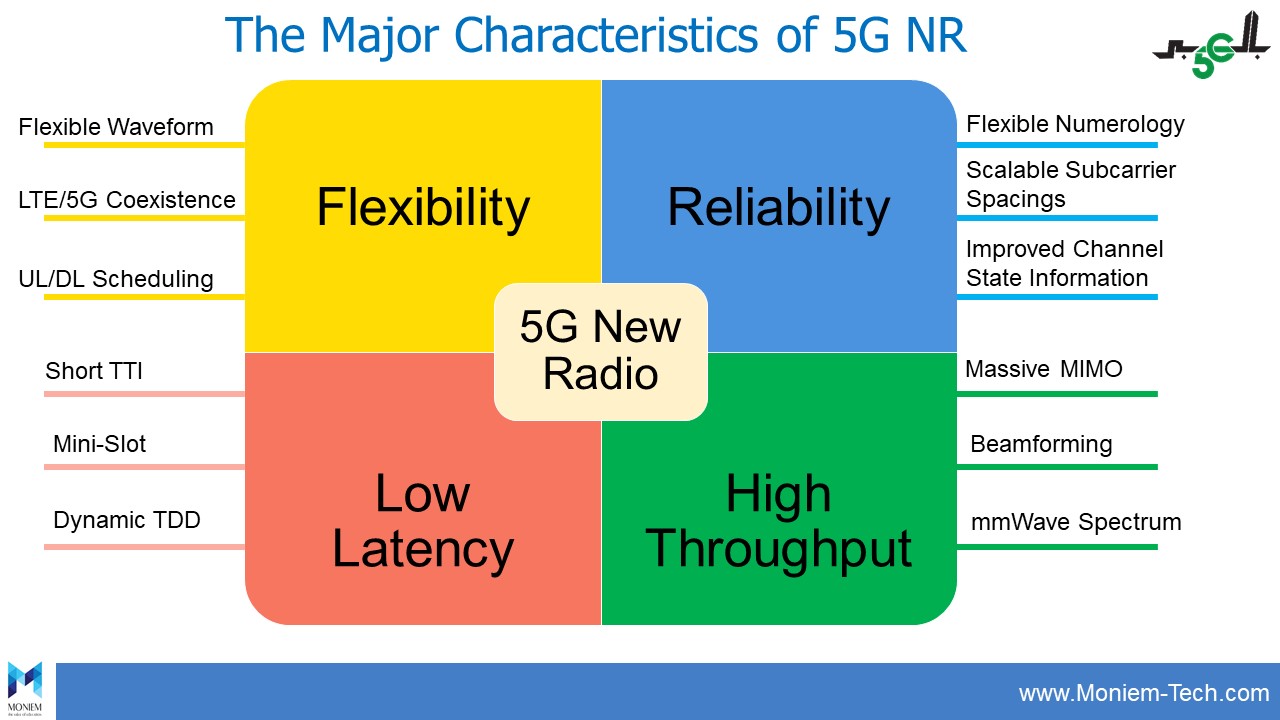5G New Radio (NR)
3GPP is defining 5G NR in Release 15, with an initial release for a non-standalone operation scheduled for March 2018 and a full release for a standalone version scheduled for September 2018.

5G New Radio Release 15 Focus:

5G NR Release 15 features:
- Ability to operate in any frequency band, including low, mid, and high bands.
- The network can support both LTE and 5G NR, including dual connectivity with which devices have simultaneous connections to LTE and NR.
- Carrier aggregation for multiple NR carriers.
- OFDMA in downlink and uplink, with optional Single Carrier Frequency Division Multiple Access (SC-FDMA) for uplink. Radio approach for URLLC to be defined in Release 16, but Release 15 will provide physical layer frame structure and numerology support.
- Massive MIMO and beamforming.
- Ability to support either FDD or TDD modes for 5G radio bands.
- Error correction through low-density parity codes (LDPC), which are computationally more efficient than LTE turbo codes at higher data rates.
- Standards-based cloud RAN support, compared with proprietary LTE approaches, that specifies a split between the PDCP and Radio Link Control (RLC) protocol layers.
- Self-contained integrated subframes that combine scheduling, data, and acknowledgment.
- Future-proofing by providing a flexible radio framework that has forward compatibility to support future, currently unknown services, such as URLLC to be specified in Release 16.
- Scalable transmission time intervals with short time intervals for low latency and longer time intervals for higher spectral efficiency.
- Dynamic co-existence with LTE in the same radio channels. (See the Appendix section “LTE-NR Co-existence” for more details.)

